Not Everyone Does It That Way
Copyright© 2011
By: Fred Willcox
All Rights Reserved
All builders in the Greater Houston area, save a couple in my experience, think that using the phrase ‘everybody does it that way’ is an excuse for their incompetence. Inspectors who are apologists for builders and inspectors whose clients are really the Realtors, not the home purchaser who is paying them, use this idea to justify not pointing out defects in houses that will cause the homeowners problems. But it is not true. When “everybody jumps off the cliff” there are always a few people who are smart enough and who have enough integrity to do things correctly.
Just a few short years ago, mold was all the rage in house inspections. Faced with huge claims, the insurance industry dropped mold as a covered item in houses. And the furor over mold died down. This could lead a cynical person to believe that major threats to our health are only major if there is insurance to pay to correct the problem.
In the feeding frenzy over the pot of gold created by the mold scare the real issue with mold got lost. The real issue with mold was determining what caused the mold and how to prevent mold from occurring again in the future. That issue was never addressed.
The causes, in most cases, of mold are defects in the cladding (exterior wall coverings) systems and with the lack of proper air circulation in the conditioned air system. The same errors in the cladding systems are made today just like they were during the crises over mold and mold is still being created in new houses. I have yet to find a newly constructed house where air circulation is proper.
Houses with masonry siding (brick, stucco, stone and synthetic stone) are almost never properly flashed and drained. This is because ‘nobody does it that way’. The rules on flashing and draining stucco have been in the ASTM (American Society for Testing and Materials) since the 1950’s. The Texas Lathing and Plastering Contractors Association has had published installation instructions on flashing and draining stucco and stone since the 1970’s. The Brick Industry Association has had the requirements for flashing and draining brick veneer since the 1970’s. The model building codes have had the current requirements for flashing and draining exterior masonry veneers since the 1980’s.
And yet, almost every masonry clad house that is built in the Greater Houston area does not have through walls drains and wall flashing materials.
There are exceptions but they are few and far between. The idea is very simple. Water that is retained in the wall cavities will enter the house as water vapor. Water vapor increases the humidity in the house which affects the performance of your air conditioning equipment. Water in the wall cavities and in the walls can cause mold to grow.
Examples of proper detailing and the moisture meter readings associated with the lack of proper flashing and through wall drains are shown below.
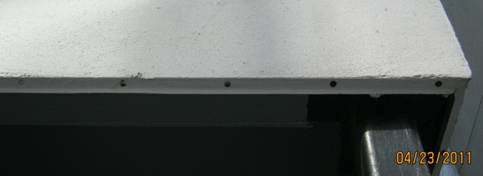

The holes seen at the bottom of the wall are weeps screeds or wall drains. Wall drains are required at all wall terminations whether they are above ground or at ground level. Builders do not install them as they consider them aesthetically unpleasing.
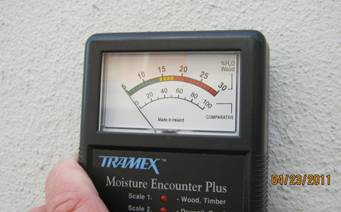
There was no indication of water in the stucco walls above the weep screeds shown above.
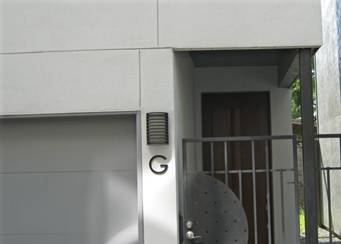
This is the house with the weep screeds at the wall terminations above ground (cantilevers). Note that the weep screeds are not visible from the street or the driveway.
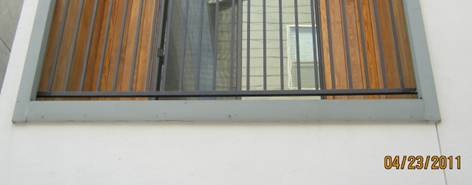
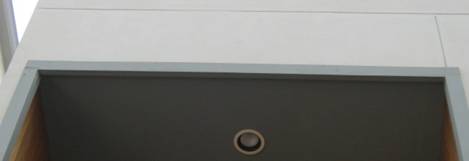
Oddly, this is the same house. The termination of the drain pan for the balcony was not visible and there was no weep screed installed on the wall termination above the balcony. The moisture level readings in these areas that are not properly drained are shown below.
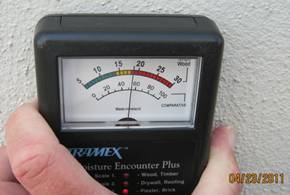
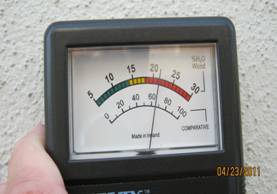
These levels of water in the wall cladding materials are sufficient to cause the growth of microbial organic organisms, which include mold.
Builders almost always build brick and stone walls without through wall drains and flashing materials. Flashing materials, if used at all, are most often a form of caulk. Caulks are not permanent water proofing materials. Many caulks have separated from the walls before you buy your newly constructed home. Examples of through wall drains are shown below. So some few builders actually do the right thing.
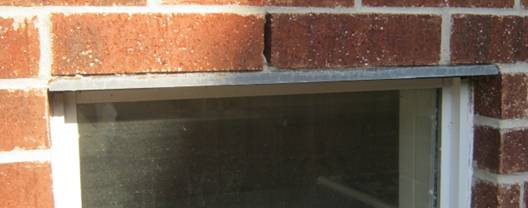
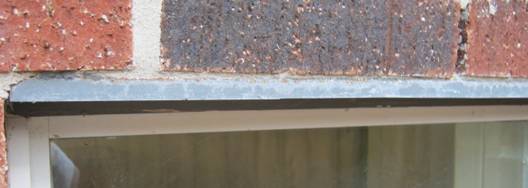
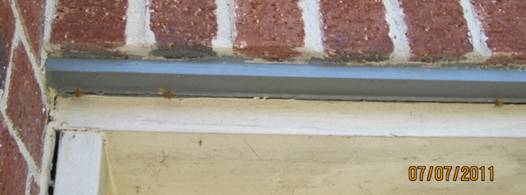
The metal pans above the window frames and the garage overhead door opening are proper through wall drain flashings. The material goes up the wall through the wall cavity and terminates behind the vapor barrier on the wall. The water is then diverter to the exterior of the wall where a drip edge prevents the water from reentering the wall cavity. Most builders and inspectors think that the steel lintel (“L” shaped piece of steel) used to support the bricks over the window and door openings can also be used as drains. It is not a good idea to use structural steel to hold and drain water.
While the lack of wall flashings and through wall drains may not be a problem on the day that you have the house you want to buy inspected, the odds are that the lack of flashings and through wall drains will cause problems in the future. Protect yourself and your family. Hire a real estate inspector who works for you.
